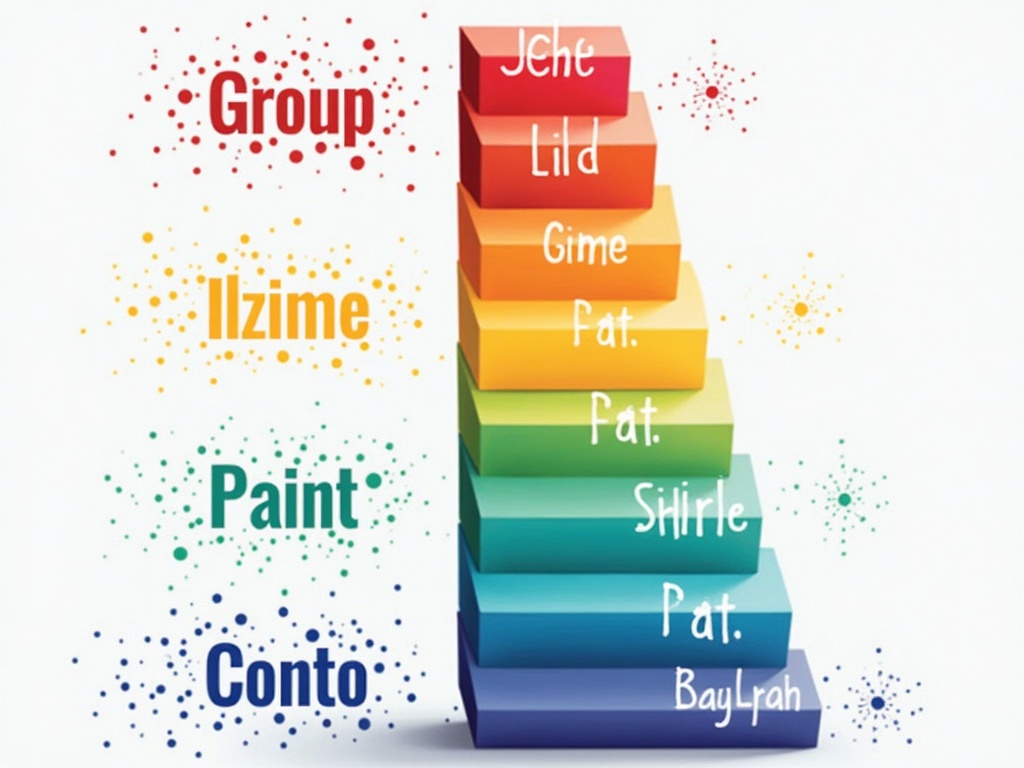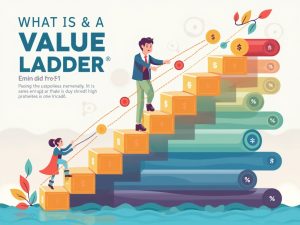What Is a Value Ladder in Business? A Comprehensive Guide
Imagine walking into a high-end car dealership intending only to browse. A friendly salesperson greets you, offers a coffee, and before you know it, you're test-driving a car you hadn't even considered. The experience was so positive, the offer so compelling, that you're seriously contemplating an upgrade. This, in essence, is the magic of a value ladder at work. It's a strategic journey, carefully crafted by the business, to guide customers from initial interest to becoming loyal, high-value clients.
Understanding the Core Concept of a Value Ladder
So, what exactly *isa value ladder in business? Think of it as a visual representation of your product or service offerings, arranged in ascending order of price and value. It’s a strategic framework that maps out the customer journey, starting with a low-commitment entry point and gradually leading towards more premium, high-value solutions. The goal? To cultivate relationships, build trust, and ultimately maximize customer lifetime value.
Unlike a simple product catalog, a value ladder is designed with deliberate intent. Each rung is carefully positioned to solve a specific problem, address a particular need, and provide increasing levels of benefit. It's about creating a seamless and logical progression that makes customers eager to climb higher.
Key Components of an Effective Value Ladder
A well-designed value ladder incorporates several key components:
- Free Offer/Lead Magnet: This is your irresistible bait. It's a valuable piece of content or service offered for free in exchange for contact information (typically an email address). Think e-books, checklists, free consultations, or trial software.
- Entry-Level Product/Service: A low-priced offering that provides tangible value and solves a specific pain point. Its primary purpose is to convert leads into paying customers and demonstrate your expertise.
- Mid-Tier Product/Service: A more comprehensive solution that builds upon the entry-level offering. This could be a course, a more advanced software package, or a bundled service.
- High-End Product/Service: Your premium offering, representing the highest level of value and often the highest price point. This could be personalized coaching, bespoke software development, or exclusive access to events and resources.
- Recurring Revenue/Subscription: Products or services that require repeat purchases, generating consistent income.
Why Implement a Value Ladder? The Benefits Unveiled
Why should businesses invest time and effort into creating a value ladder? The advantages are multifaceted and can significantly impact profitability and long-term growth.
Increased Customer Lifetime Value (CLTV): By offering progressively valuable solutions, you encourage customers to spend more with your business over time.
Improved Customer Acquisition Cost (CAC): A compelling free offer attracts leads at a lower cost than directly pitching high-end products.
Enhanced Customer Relationships: The gradual progression fosters trust and loyalty, turning one-time buyers into repeat customers and brand advocates.
Higher Conversion Rates: Customers are more likely to purchase higher-priced items after experiencing the value of your lower-priced offerings.
Better Understanding of Customer Needs: As customers move up the ladder, you gain deeper insights into their evolving needs and preferences.
Predictable Revenue Streams: Subscription-based models at the top of the ladder create stable and recurring income.
Competitive Advantage: A well-defined value ladder differentiates you from competitors who only offer transactional sales.
Constructing Your Own Value Ladder: A Step-by-Step Guide
Building an effective value ladder requires careful planning and a deep understanding of your target audience. Here's a step-by-step guide to get you started:
1. Define Your Ideal Customer
Before you can create a value ladder, you need a clear picture of your ideal customer. What are their pain points, needs, and aspirations? What problems do they desperately need solved? What are the demographics, and psychographics of these individuals? The more specific you are, the better you can tailor your offerings to their specific needs. Create a detailed customer avatar that guides all your decisions.
2. Map Out Your Product/Service Offerings
List all your existing products and services. If you're just starting out, brainstorm potential offerings that align with your target audience's needs. Think about how each offering solves a specific problem and provides a distinct level of value. Consider both the financial budget and the commitment level of the audience.
3. Arrange Offerings in Ascending Order of Value and Price
Now, arrange your offerings in a logical sequence, starting with the free offer and progressing to your premium solutions. Ensure that each step up the ladder provides a clear and compelling reason for customers to upgrade. Price each offering competitively, considering its value proposition and the cost of delivery.
4. Create a Compelling Free Offer (Lead Magnet)
Your free offer is the cornerstone of your value ladder. It should be highly valuable, relevant to your target audience, and easy to consume. It should also be directly related to your paid offerings, providing a taste of the value you provide and enticing them to learn more.
5. Design Seamless Transitions Between Rungs
The transition between each rung of the ladder should be smooth and logical. Use clear calls to action (CTAs) to guide customers to the next step. Provide ample information about the benefits of upgrading and make the purchase process as easy as possible. Consider using email marketing, retargeting ads, and personalized recommendations to encourage customers to climb higher.

6. Test, Refine, and Optimize
Once your value ladder is in place, continuously monitor its performance. Track key metrics such as conversion rates, customer lifetime value, and customer acquisition cost. Gather feedback from your customers and use this data to refine your offerings and optimize the customer journey. Experiment with different pricing strategies, marketing messages, and product bundles to find what works best for your business.
Examples of Value Ladders in Different Industries
The value ladder concept can be applied to virtually any industry. Here are a few examples:
- Software as a Service (SaaS): Free trial -> Basic plan -> Standard plan -> Premium plan -> Enterprise plan
- Consulting: Free consultation -> DIY online course -> Group coaching program -> One-on-one consulting -> VIP mastermind
- E-commerce: Free shipping on first order -> Discounted products -> Premium product line -> Subscription box -> Exclusive VIP access
- Education: Free webinar -> Introductory course -> Advanced certification program -> Master's degree program -> Doctorate program
- Health & Fitness: Free workout videos -> Nutrition guide -> Group fitness classes -> Personal training -> Retreats
Common Mistakes to Avoid When Building a Value Ladder
While a value ladder can be a powerful tool, some common mistakes can hinder its effectiveness:
Offering Low-Quality Free Content: Your free offer should be genuinely valuable and representative of the quality of your paid offerings.
Failing to Address Customer Needs: Each rung of the ladder should solve a specific problem or fulfill a specific need for your target audience.
Making Jumps Too Large: The progression between each rung should be gradual and logical. Avoid overwhelming customers with too much value or too high a price jump.
Ignoring Customer Feedback: Regularly solicit feedback from your customers and use it to improve your value ladder.
Lack of Promotion: A value ladder is only effective if customers know about it. Actively promote your offerings through various marketing channels.
The Future of Value Ladders: Personalization and AI
The future of value ladders is likely to be shaped by increased personalization and the integration of artificial intelligence (AI). AI-powered tools can help businesses:
Personalize the Customer Journey: Tailor the value ladder to individual customer needs and preferences.
Predict Customer Behavior: Identify which customers are most likely to upgrade and when.
Automate Marketing Efforts: Trigger automated email sequences and retargeting ads based on customer behavior.
Optimize Pricing Strategies: Dynamically adjust pricing based on demand and customer willingness to pay.
Create Hyper-Relevant Content: Generate content which speaks directly to each customer segment.
By embracing these technologies, businesses can create even more effective and engaging value ladders that drive customer loyalty and maximize profitability.
Final Thoughts: Climbing to Success with a Value Ladder
In conclusion, understanding and implementing a value ladder is a strategic imperative for businesses seeking sustainable growth. By carefully mapping out the customer journey and offering progressively valuable solutions, you can cultivate lasting relationships, increase customer lifetime value, and build a thriving business. So, take the time to craft your own value ladder, climb to new heights, and watch your business flourish.
